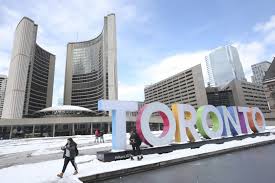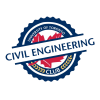Transportation Engineering Intern
City of Toronto
Tell us a bit about yourself 🙂
I work at the City of Toronto, City Hall East Tower within the Transportation Services Division. Within the division, my group is the “Pedestrian Projects” group where we largely focus on the design and delivery of new City infrastructure that would benefit and provide more safety for pedestrian and cyclists.
Describe a typical day at work
I usually get to work between 8:30-10 am. Every week, I have a list on on going tasks which I share on google docs along with some legend indication on progress so my two main project leads know what I’m up to. 
Routinely, these “tasks” include things like:
- design of specific intersection improvement capital projects planned to be delivered 1-2 years from now
- cost estimates for most capital projects
- assessing collision history of specific locations
- using Arc Map + excel to filter data vehicle volumes.
Many times, I am assigned research projects where I have to present how other cities are using specific city infrastructure for Toronto to consider the same.
What courses best prepared you for your job?
Since my job is fairly dynamic and involves using different skills, it’s hard to pinpoint specific courses. But these come to mind:
- Transport I – the equations for saturation flow rate, volume become useful context (I don’t actually have to calculate but knowing the theory behind data helps)
- Graphics (I do a lot and I mean A LOT of CAD design but tbh most of it I learned on the job).
Otherwise, just anywhere else you have used research to justify material or done other than bridge building stuff on CAD.
Describe the coolest project you got to work on
My tasks don’t necessarily have small big projects as much as I have smaller assignments and projects ongoing throughout the year. Recently, I compiled a research report on the types of innovation implemented by cities around the world for APS (accessible pedestrian signal) push buttons meant for pedestrians with vision and hearing impairments. I learned about the new things locations like Tokyo and Germany are piloting. This report is being discussed in a committee to try and determine the best APS button and signage to be used in Toronto. 
Is there anything you wish you knew about the job / industry before starting?
I wish I knew how GIS was going to be a part of my job. It is mostly being used for different groups like Transportation, Water Services etc. to submit their projects and see if there is room for coordination or “bundling” of locations that would lower total costs. It’s a neat system and one that I have to single handidly take care of submitting for my group.
Any tips / advice / anything you would like to share with current students?
I would say that if you are interested in working on a smaller team of dedicated engineers and those who care about good design, you’ll like it. It feels rewarding to be directly working to fix City infrastructure or add elements that would elevate the walking, cycling and other modes of active transportation. Ask me questions!

